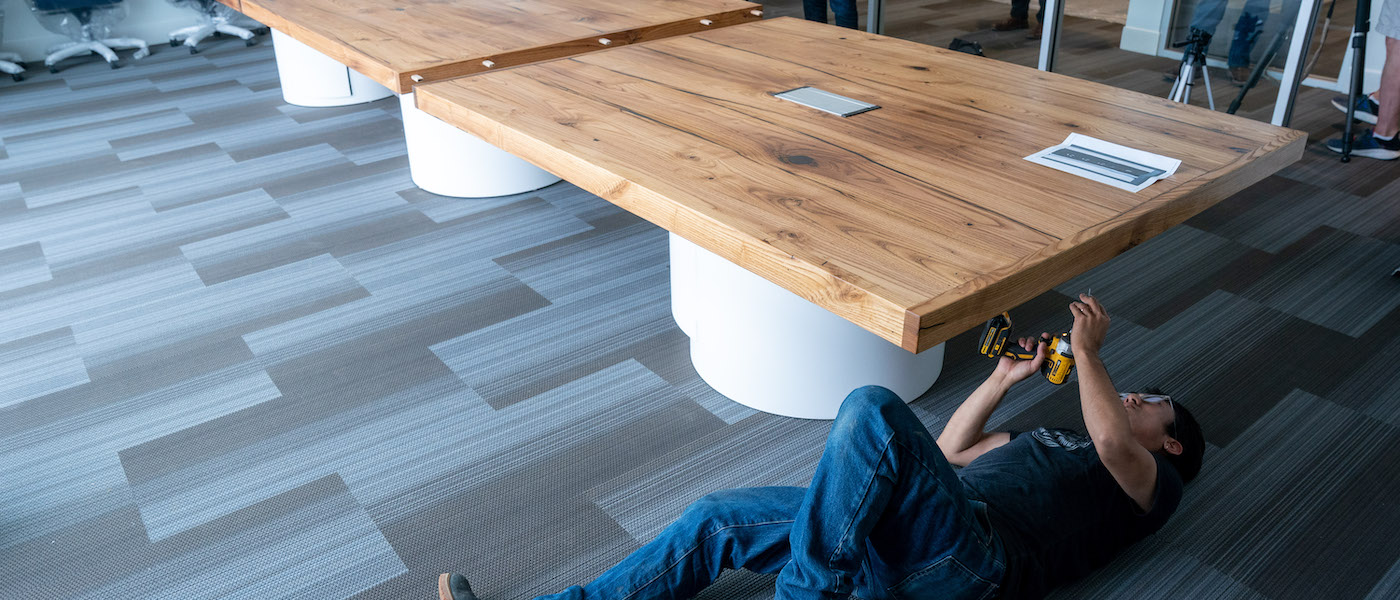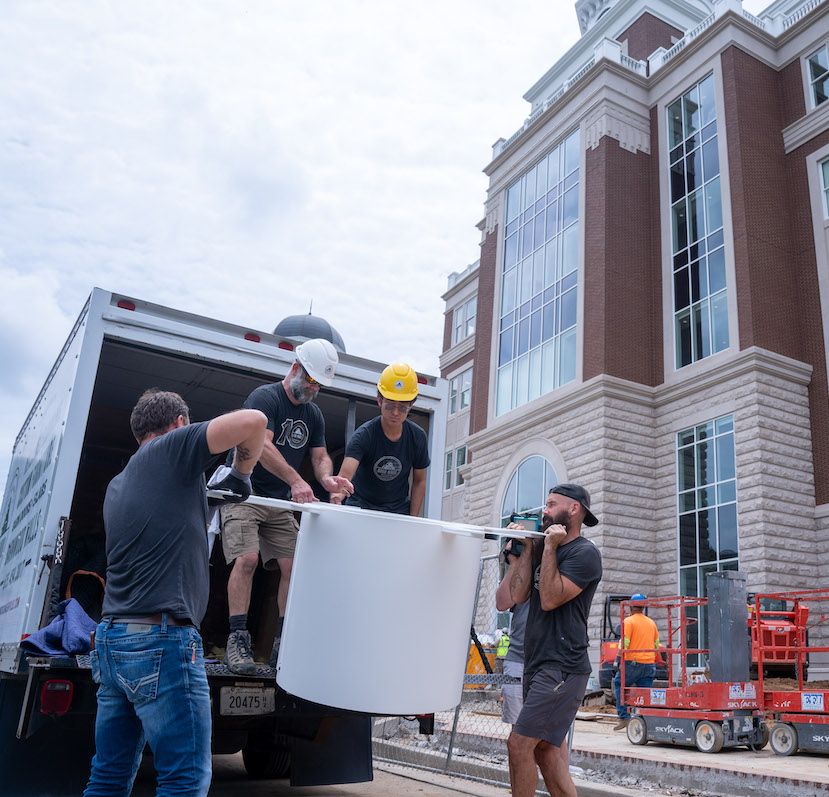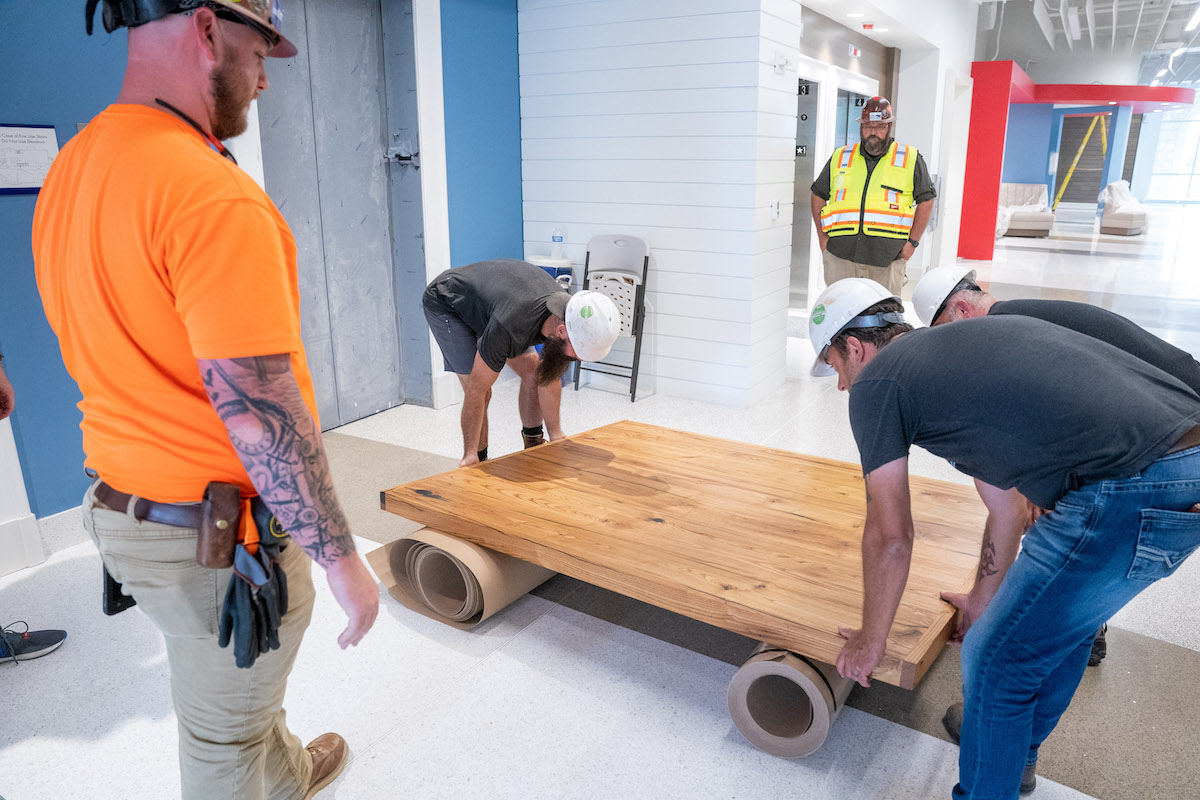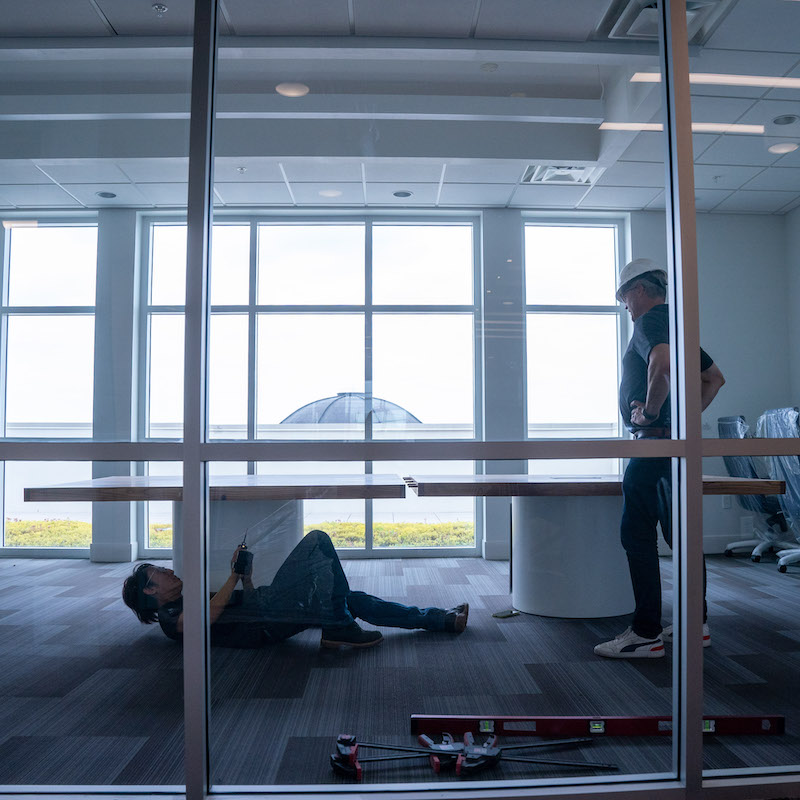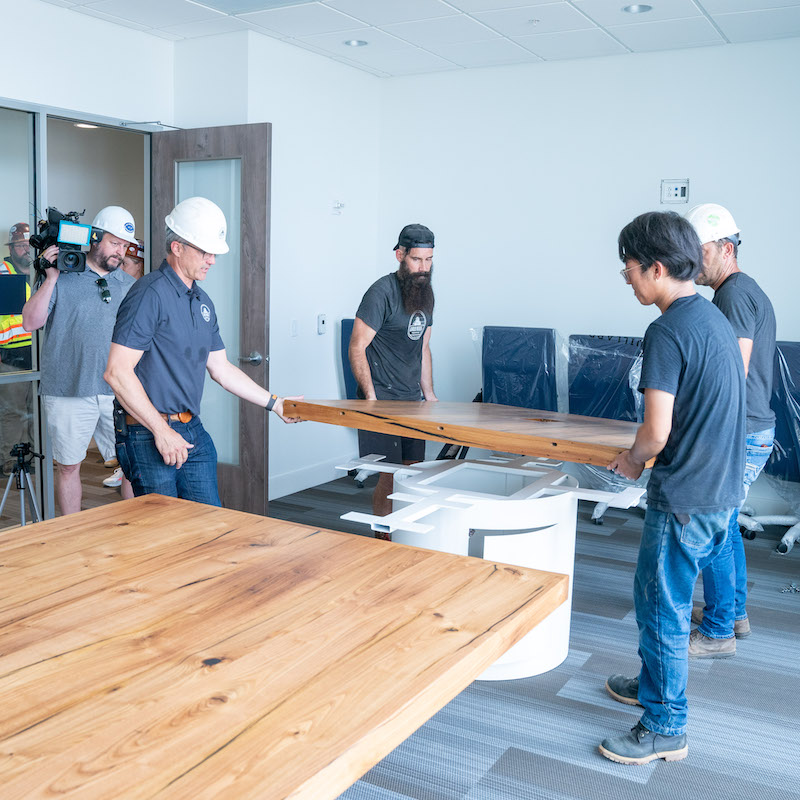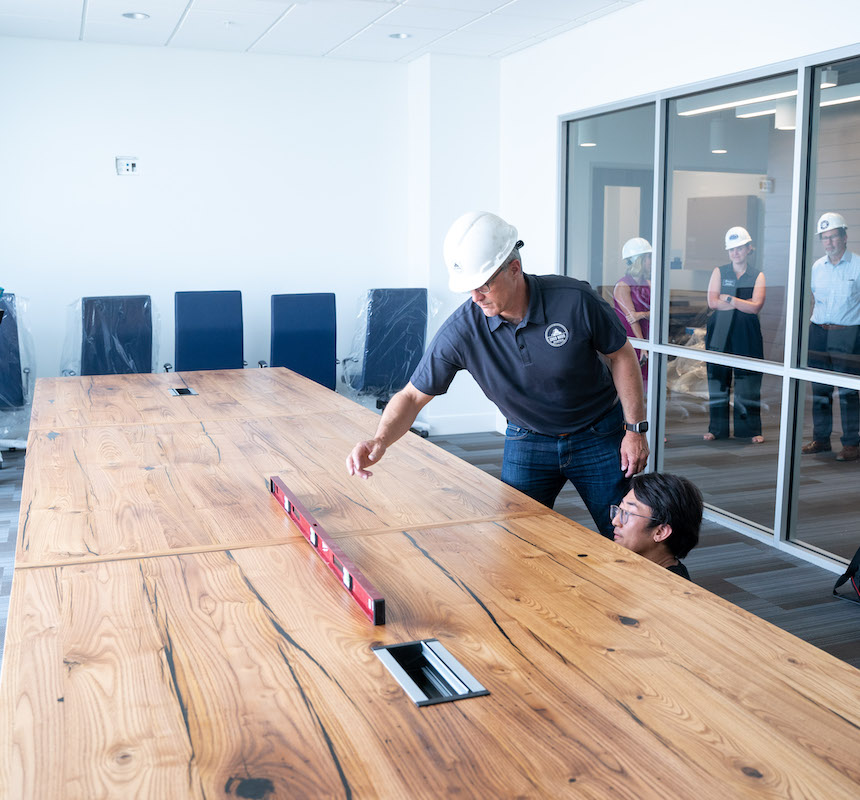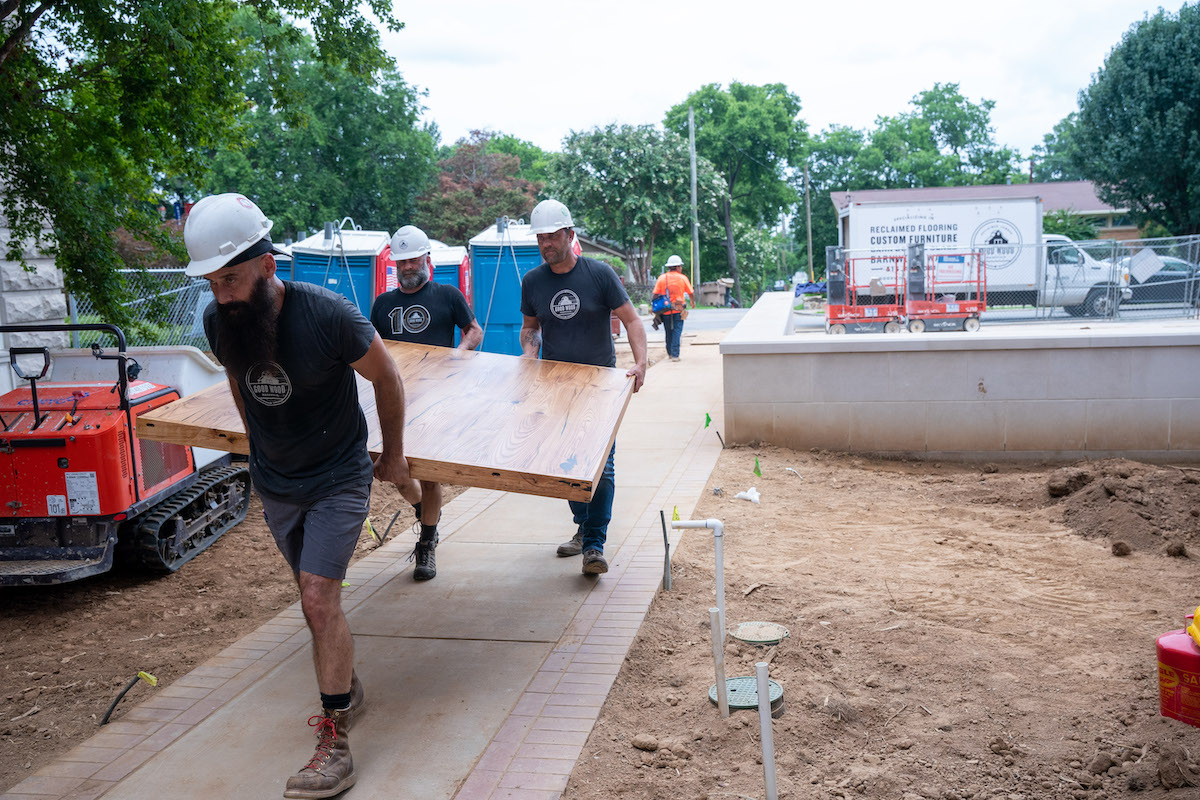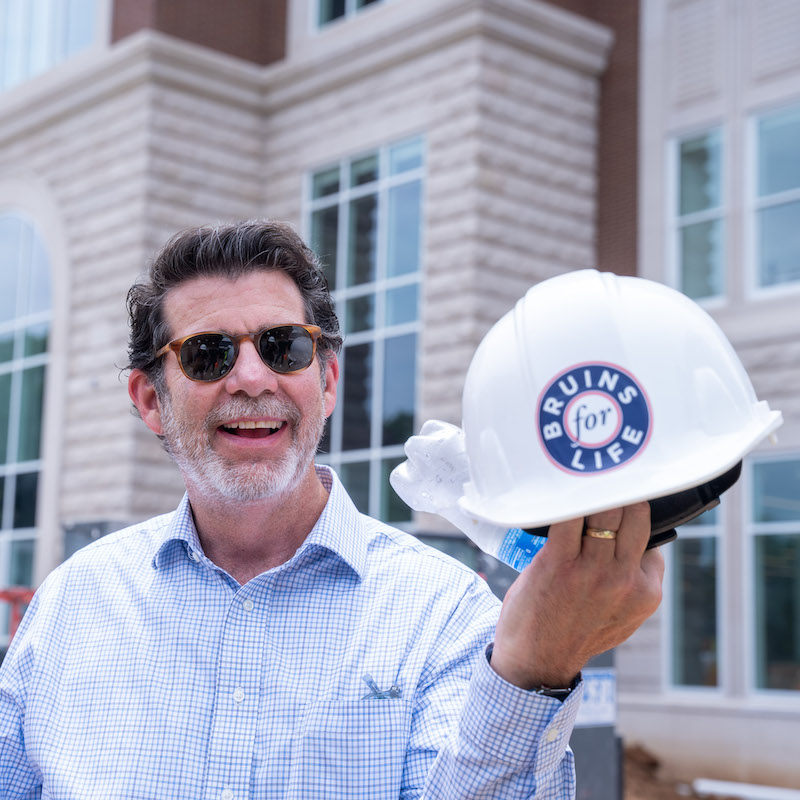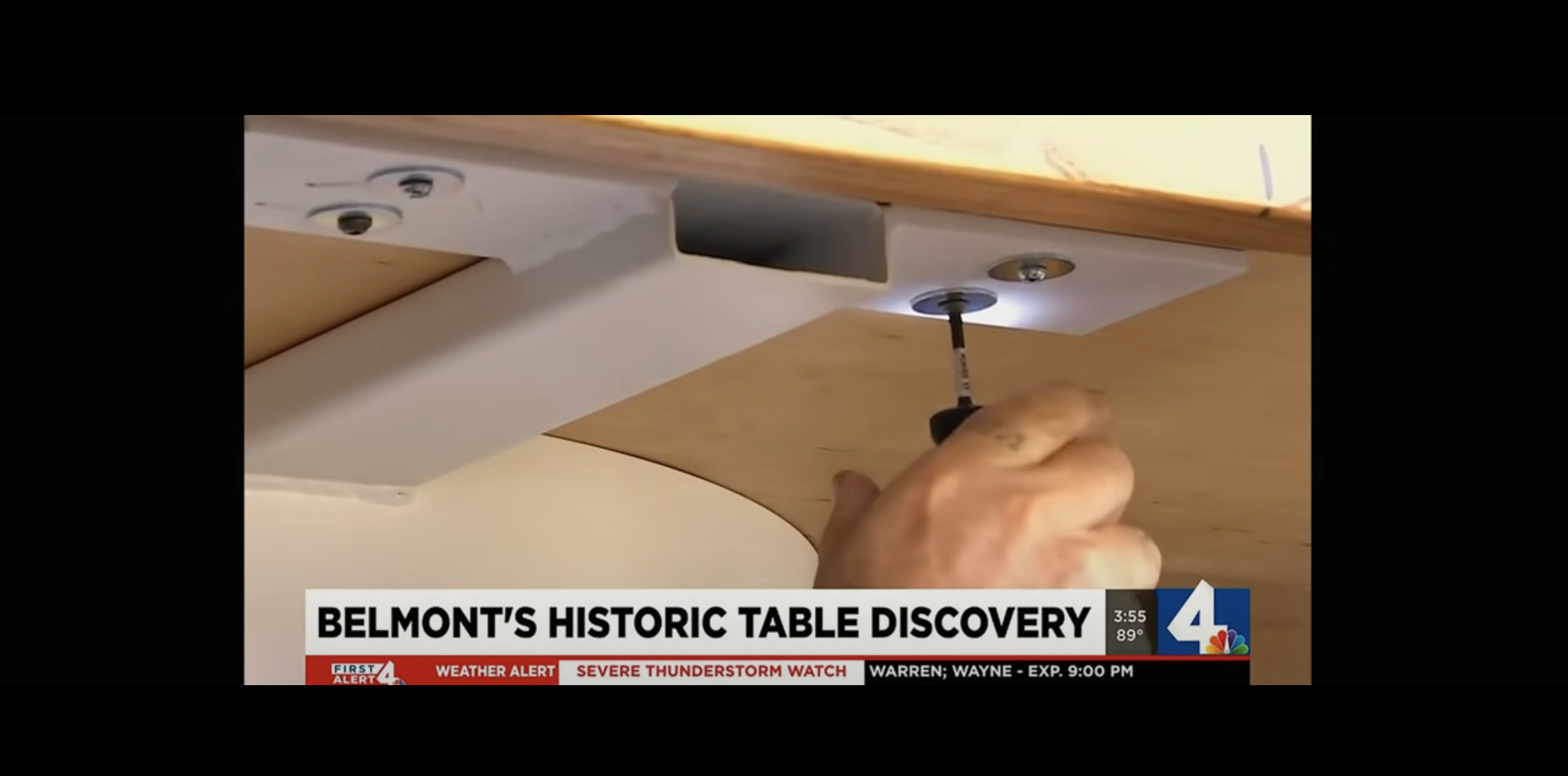One hundred forty year old wood reclaimed from Freeman Hall
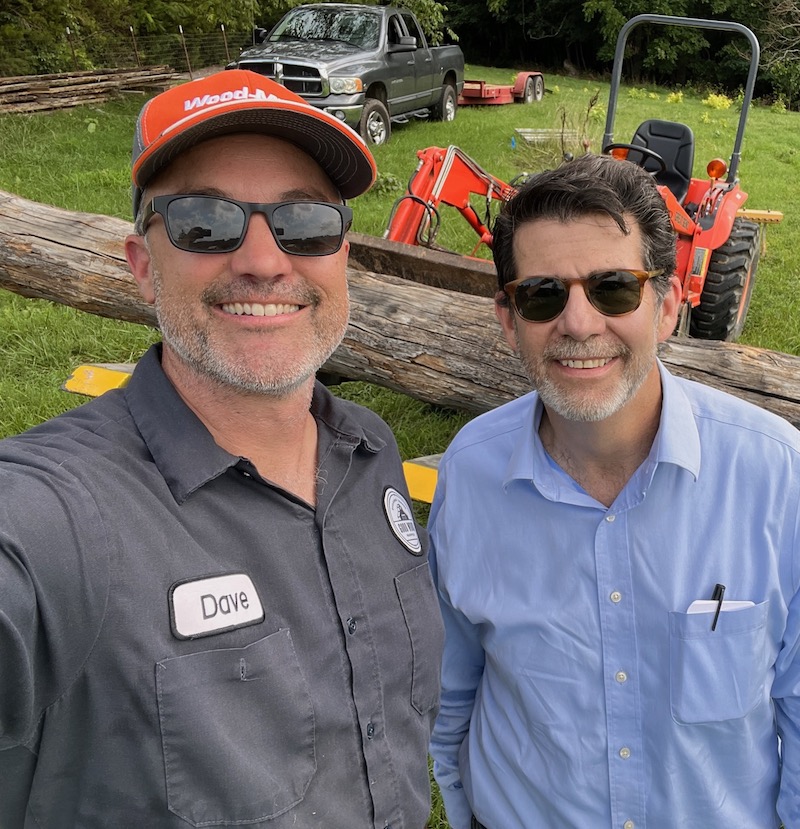 Complemented by stunning views of downtown Nashville, "The Chestnut Table” is the star of the sixth-floor conference room in Belmont’s new Jack C. Massey Center near the Belmont Data Collaborative and Belmont Innovation Labs offices.
Complemented by stunning views of downtown Nashville, "The Chestnut Table” is the star of the sixth-floor conference room in Belmont’s new Jack C. Massey Center near the Belmont Data Collaborative and Belmont Innovation Labs offices.
The wood used to make the table—American chestnut—was reclaimed from the column supports on Freeman Hall’s front porch in 2022. The prolific American Chestnut in its prime totaled more than four billion trees at the beginning of the 20th century. As a dominant species in the eastern United States, it became one of the largest, tallest and fastest growing trees in the region.
The wood is also known as “wormy chestnut,” referring to trees that succumbed to the chestnut blight of the early 1900s which killed off nearly the entire population. Worms tore through the trees leaving holes and discoloration. Many trees were too far gone, but those still usable were harvested for use as affordable lumber.
Today, the American chestnut species is known as “functionally extinct,” as the blight could not completely kill off the underground root system. But what once grew as nut-producing, hundred-foot-tall trees are now merely shrubs.
In June 2022, repairs were made to Freeman Hall’s front porch, including the ionic columns that support the porch’s roof. As the front-facing part of campus, the building houses the Office of the President and more than 130 years of campus history.
The building—originally named Friendship Hall and later North Front Hall prior to Freeman Hall—was built in 1891, just before Belmont College for Young Women opened. The front porch of the building was added later, sometime between 1905 and 1912. Due to the blight, Chestnut trees that likely grew near the property were cut down and used as internal column supports.
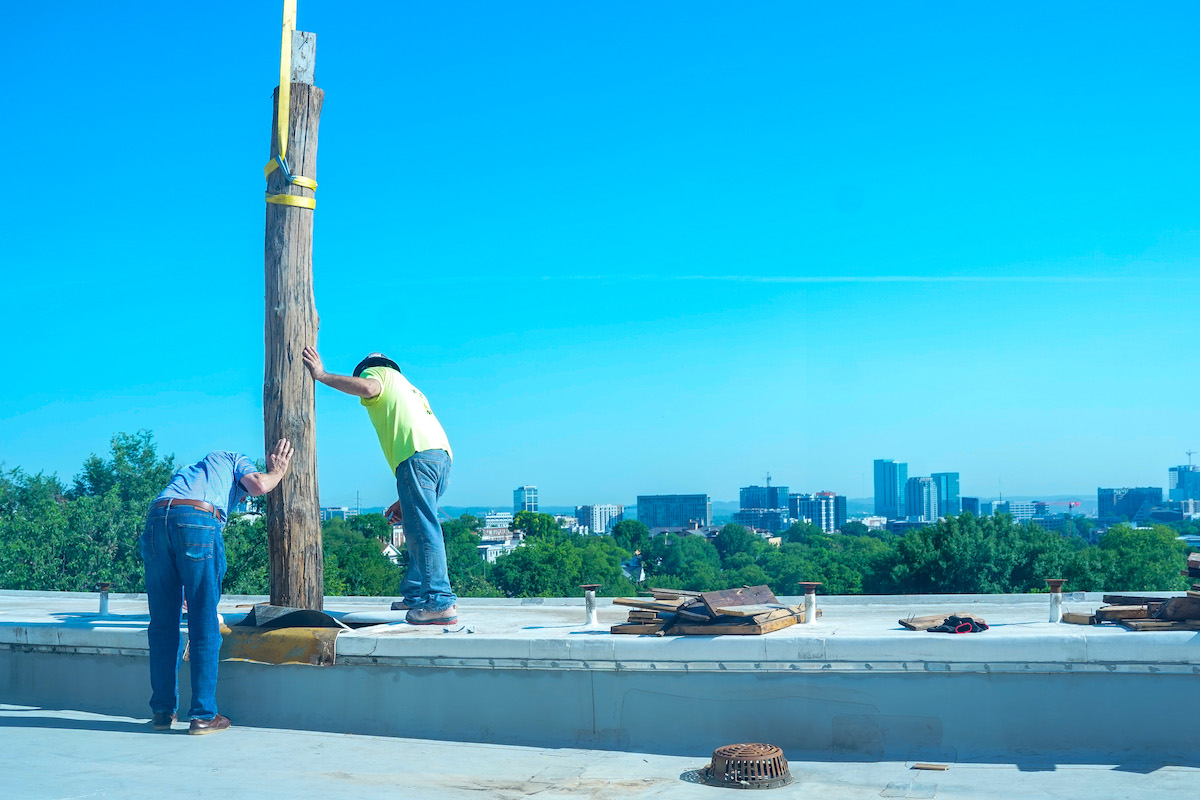
Removing chestnut supports from columns at Freeman Hall.
“We wanted to make sure we didn’t do anything to disrupt the historical integrity of the building,” said David Minnigan of the repairs, formerly a principal architect with ESa (during the porch restoration) and now the University’s Architect in Residence. “There was a bit of a surgical look at how the porch needed to be taken apart so we could put it back together and not lose history.”
It was not until working with structural engineers to extract the column supports that the team learned there was something worth saving inside.
During the porch repair, the internal wood supports were replaced with steel. Of the six removed, two logs showed no signs of rot and were reclaimed for something else. Knowing how old the wood was, Minnigan had the foresight to call his friend Dave Puncochar, founder and CEO of the local custom wood studio “Good Wood,” and soon-to-be Belmont parent.  “I knew if anyone could do something with them, it would be him,” said Minnigan of Puncochar’s woodworking.
“I knew if anyone could do something with them, it would be him,” said Minnigan of Puncochar’s woodworking.
After taking a piece of the wood back to his shop, Puncochar said most of his team believed it would be chestnut. “But chestnut is extinct,” he said. “And sure enough, when we milled these trees, they were wormy chestnut. We were ecstatic and couldn’t believe it.”
This type of wood is hard to find, he said, and is likely five to 10 times more expensive than other wood today, as you can only find it in a reclaimed state. Puncochar offered to use the wood to make a conference room table for Belmont’s Jack C. Massey Center, opening in August.
The wood needed numerous repairs and building was a laborious process. Following milling and drying and cutting panels, the Good Wood team filled each worm hole within the wood with epoxy to ensure a smooth surface.
Chestnut darkens in the sunlight, and due to the natural light that floods in, the table will darken over time, only becoming more beautiful with age.
“We love preserving our past. This piece honors the story that it came from Belmont,” said Puncochar.
This table is now in the Jack C. Massey Center, the first building Belmont President Dr. Greg Jones commissioned since coming in 2021. Housing collaborative and forward-thinking departments, the groups who use the table will be looking at complex problems from the past and finding creative solutions for the future.
“It was natural that we would take something very old and try to incorporate it into a new building. This is a piece that will be used for years and years, and I can’t wait to see the faculty, staff and students that will surround this table and the ideas formed around this table that will change the future.”

